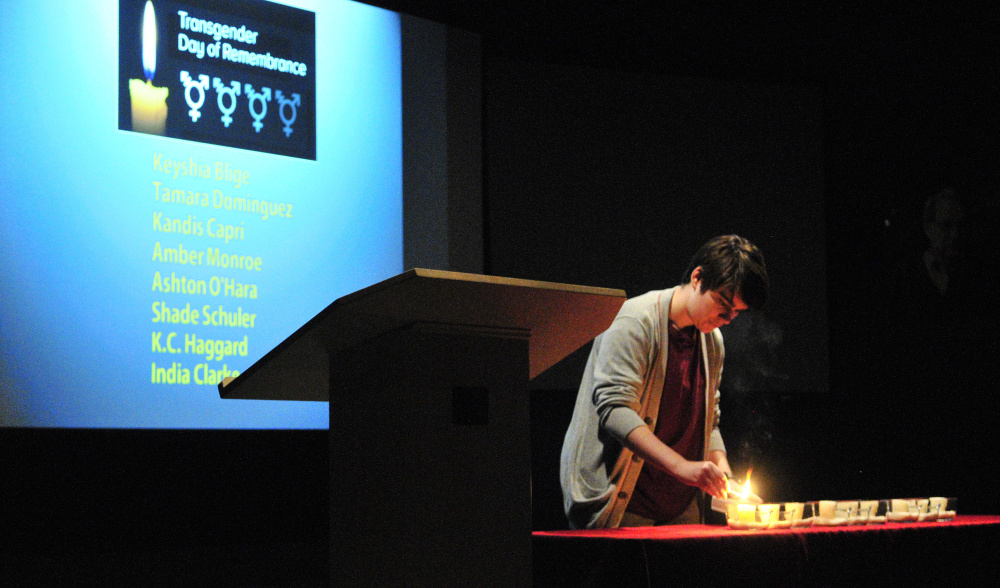Ask Americans to name a transgender person, and you’ll hear a lot about Caitlyn Jenner.
But there are nearly two dozen others people should pay attention to: those murdered in the last year, the most since advocacy groups began tracking cases a decade ago.
Those 22 people, who were remembered recently at events throughout the state and country, are much closer representations of the transgender community, which despite recent gains is subject to misunderstanding, intimidation and violence at a level that should be widely denounced but is most often met with silence.
Civil right improvements come in small steps, but that shouldn’t be an excuse to allow another generation of transgender Americans to suffer while the broader population catches up.
The path to understanding and equal rights must be quicker, and it starts by recognizing the bigotry that exists, and saying loud and clear that it is not acceptable.
Nineteen of the 22 murdered this year were black or Latina women, highlighting the dangerous mix of racism, misogyny and homophobia, as well as misconceptions about masculinity, that are faced in particular by transgender people of color.
But it doesn’t end with them. Transgender people of all races and backgrounds are often pushed to the margins, where they have few legal protections and often face uncaring or intolerant authorities.
That makes transgender people more likely to experience intimate partner violence than non-transgender people, and more likely to participate in sex work. They are more likely to live in poverty.
They also must live in fear – transgender people are 400 times more likely to be assaulted or murdered.
And even if a person has missed the pitfalls of growing up transgender, of finding their own identity, and surviving the confusion and prejudice of those around them, including their own family, and even if they’ve found their own accepting community, they face the misconceptions, ridicule and outright scorn of others they encounter in everyday life, in a thousand different interactions.
That’s a heavy weight, and it shows – transgender people are far more likely to commit suicide than the population as a whole.
Unfortunately, we don’t hear enough about the fear and trepidation many transgender people have just going out in the world. Instead, it is the fear others have of transgender people that dominates the news.
Earlier this month, residents of Houston rejected overwhelmingly an ordinance that would have provided protections against discrimination for transgender people. It was necessary – Texas is one of 33 states that allow work and housing discrimination on the basis of gender identity. (Fortunately, Maine is not one of them.)
Opponents, however, successfully stoked fears that the ordinance would allow men dressed as women into women’s public bathrooms.
That’s patently ridiculous. There is no evidence that predators would use the law to gain entrance to bathrooms, but there are plenty of examples of transgender women being assaulted after being forced to use a men’s bathroom. But it shows just how easily non-transgender people’s discomfort around the issue is turned to fear and discrimination.
Rhetoric like that seen in Houston dehumanizes transgender people, and makes it easier to set them apart.
Instead, we should focus on what makes us alike – the desire to live as the person we are, and free from fear that the simple act of being will make us a target.
Send questions/comments to the editors.



Success. Please wait for the page to reload. If the page does not reload within 5 seconds, please refresh the page.
Enter your email and password to access comments.
Hi, to comment on stories you must . This profile is in addition to your subscription and website login.
Already have a commenting profile? .
Invalid username/password.
Please check your email to confirm and complete your registration.
Only subscribers are eligible to post comments. Please subscribe or login first for digital access. Here’s why.
Use the form below to reset your password. When you've submitted your account email, we will send an email with a reset code.